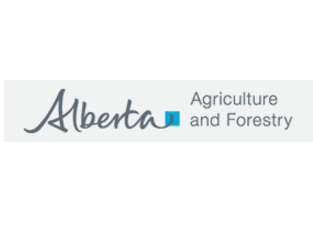Source: Alberta Agriculture and Forestry
Testing various feeds and knowing the nutritional values of each informs producers that they are feeding the right feeds at the right time.
“Livestock producers have at least five months of winter ahead of them,” explains Andrea Hanson, livestock extension specialist with Alberta Agriculture and Forestry.
“By testing the various feeds and knowing the nutritional values of each, producers can avoid future issues and know that they are feeding the right feeds at the right time.”
Many of Alberta’s commercial cow herds are just into their second trimester of pregnancy by November, and a cow’s needs are quite different in her first, second and third trimester of gestation.
First trimester
“If cows come off pasture with a body condition score of less than 3 on a scale of 5, these thinner cows will require more feed to stay warm through the winter and grow a healthy calf,” she says. “Thinner cows would benefit from being sorted from the rest of the herd and fed separately or perhaps with the first calf heifers.”
Second trimester
As long as the cows are in good condition, Hanson says that cows in this trimester just need to maintain their body weight.
“Crop residue or swath grazing are two great feed sources that can reduce the overall cost of feeding the herd,” she says. “To fully use feed while keeping nutrition at a consistent level, limit grazing is recommended.”
“If the herd is provided the entire area at once, the cows eat all the higher quality parts of the forage first, leaving the stems and course material for later. This is counter-productive at a time when their plain of nutrition needs to be increasing, not decreasing.”
She says that throughout the time the cattle are on a cereal-based diet, typically high in phosphorus, it is important to monitor their calcium to phosphorus ratio, ensuring it remains optimum.
“Magnesium is typically deficient in cereal crops, increasing the risk of downer cows or winter tetany. Feeding a 3:1 mineral during this time may be necessary. The addition of limestone to a 1:1 or 2:1 mineral is also recommended.”
Third trimester
As a cow gets closer to calving, her dietary requirements for calcium and magnesium increase due to the growing calf and the cow’s production of colostrum. Four to 8 weeks before calving, the cow’s body begins to mobilize calcium and magnesium from her bones to develop the colostrum. As a cow loses her ability to mobilize those minerals as she ages, so she along with high milking cows, require more calcium and magnesium in general.
“During the third trimester, producers should start to supplement the cow’s diet with an alfalfa grass hay to bump the calcium content in the ration and provide more protein,” she adds. “Legumes are high in calcium so saving that alfalfa or alfalfa-grass hay for the last months of the third trimester and into lactation is essential.”
Monitoring the weather throughout the winter feeding season is also extremely important.
“Cows can withstand cold temperatures as long as they have the body condition, or fat, to insulate themselves. Days of cold weather with no extra energy provided can decrease a cow’s body condition. A 1350 lb cow at the end of her second trimester, with a body condition score of 3.5 on swath grazing, can eat free choice barley or oat greenfeed without any nutritional concerns in a daytime temperature of -10 C and a 10 km per hour wind. When the weather changes to -40 C for a daytime high and the same wind speed, she needs to consume an additional 5 lb of barley grain to maintain her body weight.”
“Feed is the biggest expense in a cattle operation,” says Hanson. “Producers need a strategy for their feed supply at the start of the year when they have more choices and can ensure that the right feeds are provided during the best time of the feeding season. If feed resources need to be purchased, finding the proper forage or grain can ensure that the cows’ nutrition is optimized.”
Contact
Connect with the Alberta Ag-Info Centre:
Hours: 8 am to 5 pm (open Monday to Friday, closed statutory holidays)
Toll free: 310-FARM (3276)






